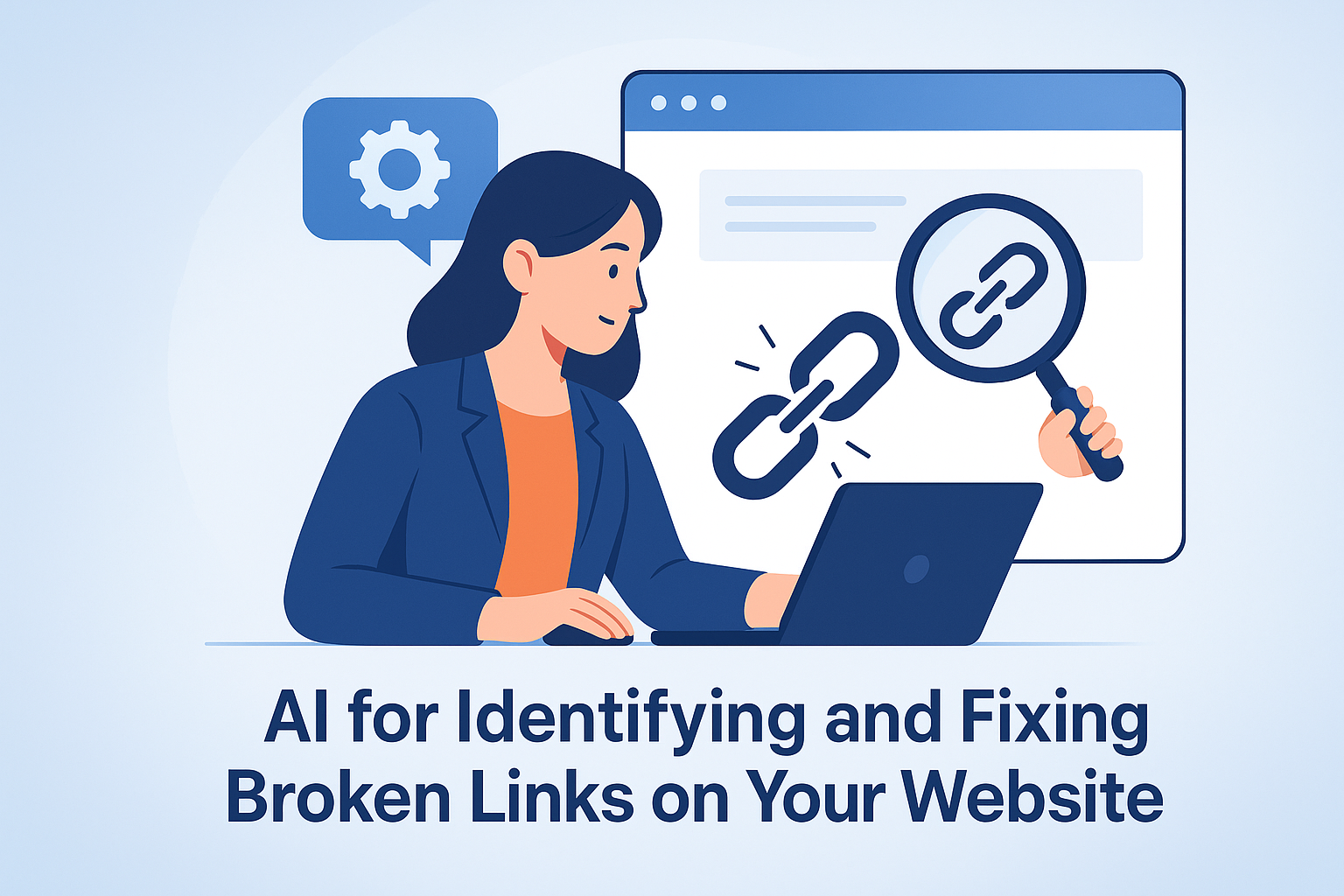Modern SEO isn’t about isolated blog posts—it’s about structured content ecosystems that guide users and search engines through related ideas and solutions.
That’s the power of topic clusters and pillar pages.
- Topic clusters are collections of tightly related content around a central subject.
- Pillar pages act as the core content hubs that link out to supporting pages—and are linked back to by those pages in return.
Together, they create an SEO-optimized structure that boosts authority, improves crawlability, and delivers a better user experience.
With AI-powered tools like DIYSEO GPT, the SEO AI Writer, and Link Marketplace, you can build topic clusters and pillar content faster, smarter, and more strategically—without spreadsheets or guesswork.
Why Topic Clusters and Pillar Pages Work
Search engines reward depth and clarity. When your site structure shows expertise on a subject, you’re more likely to:
- Rank higher for core and long-tail keywords
- Improve internal link equity distribution
- Lower bounce rate by providing logical next-clicks
- Increase crawl efficiency and indexation speed
- Earn backlinks by presenting comprehensive, well-organized resources
AI helps you map and execute this framework in a scalable way.
Step-by-Step: Building Topic Clusters with DIYSEO
✅ Step 1: Identify Core Pillar Topics with DIYSEO GPT
Use DIYSEO GPT’s expert prompts to uncover your most strategic content opportunities.
🔍 Prompt: Top Performing Pages
Find existing content with strong organic traffic that could serve as the foundation for a pillar page.
Ask in Chat History:
“Which high-performing pages could be converted into pillar pages with supporting content?”
You’ll receive a ranked list of content by traffic, engagement, and keyword potential.
📉 Prompt: Query Position Changes
Uncover content that may need to be restructured or supported by a cluster to recover rankings.
Follow up:
“Which pages that lost position could benefit from supporting internal content?”
📚 Prompt: Topic Gap Analysis (if available)
This reveals key subtopics or questions your competitors are covering that you’re not—ideal for building supporting cluster content.
✅ Step 2: Create a Pillar + Cluster Map
Once you’ve identified your main topics, map them into clusters. Each should include:
- Pillar Page: The core comprehensive resource
- Cluster Pages: 5–15 supporting articles that target narrower keywords
- Internal Links: From each cluster page → pillar page, and vice versa
- CTA or conversion element at the pillar page level
Example:
Pillar Topic: AI SEO Strategies
- Cluster: AI for Keyword Research
- Cluster: AI Content Generation Tools
- Cluster: AI SEO Case Studies
- Cluster: Optimizing AI Content for Search
- Cluster: How to Audit AI SEO Performance
✅ Step 3: Write and Optimize Content with SEO AI Writer
Use the SEO AI Writer to generate or improve both pillar and cluster content.
Prompt Example for Pillar:
“Write a comprehensive 2,000-word guide on ‘AI SEO Strategies’ that includes sections for tools, implementation, performance tracking, and case studies. Use a professional tone and structure it with SEO best practices.”
Prompt Example for Cluster Content:
“Write a 1,000-word article on ‘How AI Helps with Keyword Clustering’ as a supporting piece for a pillar page on AI SEO. Include 3 internal links and one CTA.”
AI helps you:
- Ensure content depth and topical coverage
- Maintain consistency in voice and structure
- Align with SEO best practices like heading hierarchy and keyword variation
✅ Step 4: Automate Internal Linking with DIYSEO GPT + SEO AI Writer
After publishing or optimizing your content, create the internal linking structure that binds your cluster together.
Use DIYSEO GPT:
“Suggest internal link paths between my pillar page on ‘AI SEO Strategies’ and these 5 supporting pages.”
Then use SEO AI Writer to:
- Insert natural anchor text
- Add “What to read next” blurbs
- Reformat sections with embedded links
Internal links should flow both from cluster pages to the pillar page (to consolidate authority) and from the pillar to supporting content (to improve UX and indexing).
✅ Step 5: Track Performance and Adjust
Use the Query Position Changes, Top Queries by Clicks, or Crawled – Not Indexed prompts to monitor:
- Ranking lifts for pillar topics
- Indexation of new cluster pages
- Performance of internal link structure over time
Ask:
“Has the new AI content cluster improved my rankings for ‘AI SEO tools’?”
DIYSEO GPT will analyze GSC trends and provide data-backed answers.
Reinforce Pillar Pages with Link Marketplace
Once your pillar page is live and internally supported, give it external authority.
Use the Link Marketplace to:
- Build high-authority backlinks to your pillar content
- Target placements in your industry niche (SEO, tech, SaaS, AI, etc.)
- Promote guides, checklists, and ultimate resources as link magnets
Example Strategy:
Your pillar page on AI SEO Strategies is complete. Now:
- Filter by:
- DA: 40+
- Niche: Digital Marketing or SaaS
- Format: Guest post, featured list, etc.
- Choose 3 placements with strong engagement metrics
- Build links to the pillar page to increase crawl frequency, trust, and rankings
Supporting pages benefit too—especially when interlinked correctly.
Pillar + Cluster Success Case Study
Problem: An AI software company had fragmented blog content on SEO, scattered across dozens of posts with no hierarchy or internal structure.
DIYSEO Fix:
- Ran Top Performing Pages → Identified a high-traffic post on “AI Content Strategy”
- Used Topic Gap Analysis → Found 9 content gaps across AI tools, audits, performance tracking
- Used SEO AI Writer → Created a 2,200-word pillar and five 1,000-word cluster posts
- Connected all pages using SEO AI Writer-generated anchor text
- Built 4 backlinks to the pillar page via Link Marketplace
Results:
- 3x increase in average session depth
- Pillar page reached position #3 for “AI SEO Strategy”
- 5 cluster pages ranked in top 20 for their target terms within 30 days
- Internal linking improved crawl efficiency and decreased bounce rate
Final Thoughts
Topic clusters and pillar pages aren’t just a content strategy—they’re an SEO foundation. They help users and search engines navigate, understand, and trust your content ecosystem.
With DIYSEO, you can:
- Discover topic opportunities using GPT prompts
- Write pillar and cluster content at scale with SEO AI Writer
- Automate internal linking that boosts crawlability and rankings
- Promote content hubs with Link Marketplace to earn authority and trust
Smarter structure leads to stronger rankings—and AI helps you build both with clarity and speed.
Frequently Asked Questions
1. What are topic clusters and pillar pages, and why are they important for modern content strategies?
Topic clusters are groups of interlinked web pages that revolve around a central topic or theme, with the pillar page serving as the main content piece. This pillar page acts as a comprehensive resource on a broad subject, linking to more detailed articles or cluster pages that offer deeper dives into specific subtopics. This structure mimics a spider web, where all the strands (cluster articles) are connected to a central node (pillar page), indicating to search engines and users alike the importance and depth of your content on a particular topic.
The importance of topic clusters and pillar pages cannot be overstated in today’s digital marketing landscape. With search engines progressing beyond simple keyword searches, they now focus on understanding the intent behind queries and evaluating the thoroughness of the content provided in response. A well-organized topic cluster increases the chances of your content ranking highly by showing search engines that your site is an authority on the subject matter. Additionally, for users, this structured approach offers an enhanced experience, as they can effortlessly navigate through a plethora of related content, reducing their need to scout other sources.
2. How does Artificial Intelligence (AI) assist in creating topic clusters and pillar pages?
AI revolutionizes the way we approach content creation, including the development of topic clusters and pillar pages. By leveraging AI, content creators can automate much of the legwork traditionally associated with this task. AI tools can swiftly analyze large volumes of data to identify relevant topics, keywords, and search queries. They can spot patterns and gaps in existing content, suggesting potential subtopics that could strengthen a cluster.
Moreover, AI can evaluate user engagement metrics to determine which topics generate the most interest, thereby guiding the structuring of future clusters. Content optimization tools powered by AI also provide insights into content performance and recommend changes to enhance readability, SEO, and relevance, ensuring your pillar pages and clusters are not only effective at capturing attention but also maintaining it. Hence, AI not only simplifies the process of building these sophisticated content structures but also ensures they are optimized for best results.
3. Can AI tools suggest which topics or keywords to focus on for building effective clusters?
Absolutely, AI tools excel in analyzing vast datasets to identify trending topics and relevant keywords that you may not have considered initially. By evaluating search engine data, social media trends, and content performance analytics, these tools provide actionable insights into what your audience is genuinely interested in. This data-driven approach ensures that your topic clusters are not just based on assumptions but are grounded in actual demand.
AI tools can automatically generate keyword lists and topic ideas that align with your target audience’s search behavior. They can map these findings to your existing content, highlighting where new clusters could be developed or suggesting enhancements to current ones. Furthermore, AI can help in predicting future trends, allowing you to be proactive in content planning rather than reactive, positioning your site as a leader in your domain.
4. What role does AI play in optimizing pillar pages for user engagement and search rankings?
AI plays a critical role in optimizing pillar pages by providing insights that can enhance both user engagement and search rankings. By analyzing data on user interactions, AI can identify which sections of your pillar page are most effective in retaining attention and which may require refinement to reduce bounce rates. This real-time feedback enables you to make continuous improvements to your content.
From an SEO standpoint, AI tools can assess the search engine algorithm’s preferences and recommend adjustments to your content structure, meta tags, and linking strategies. They ensure that your pillar pages are optimized for both relevant long-tail and short-tail keywords, increasing the chances of your content appearing in search engine results. AI can also provide guidance on improving load times, mobile responsiveness, and other technical SEO factors, all of which significantly impact user experience and rankings.
5. What challenges might one encounter when using AI for creating topic clusters and pillar pages, and how can they be overcome?
While AI offers powerful capabilities for creating topic clusters and pillar pages, it also introduces certain challenges that need to be navigated carefully. One major challenge is the potential over-reliance on AI-generated recommendations, which may overlook the nuanced understanding of your audience’s preferences that only human insight can provide. Balancing AI-driven suggestions with human creativity and intuition is crucial.
There’s also the risk of producing content that is too focused on appeasing search engines rather than delivering genuine value to readers. This can be mitigated by always prioritizing high-quality, informative, and trustworthy content over merely following algorithmic trends. Another challenge is integrating AI tools into existing systems and workflows, which may require an initial investment of time and resources to train teams appropriately and ensure smooth implementation.
Finally, ongoing monitoring and evaluation are necessary to ensure that AI continues to align with your strategic goals, effectively balancing automation with hands-on oversight to fine-tune content strategies continually. By embracing a collaborative approach—leveraging AI for its strengths while maintaining a human touch—you can surmount these challenges and create substantiated content strategies that deliver enduring results.



